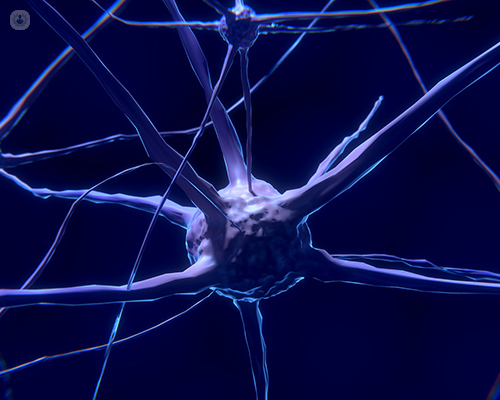An expert’s guide to radiofrequency denervation
Escrito por:Radiofrequency denervation is a pain treatment that kills or destroys nerve endings. In his latest article, renowned pain medicine consultant Dr Sumit Gulati explains this treatment, offering his expert advice to prospective patients.
What is radiofrequency denervation?
Radiofrequency denervation is a procedure in which a machine uses radiofrequency waves to kill, destroy or modulate nerve endings or sometimes soft tissue.

Who is a candidate for radiofrequency denervation?
Radiofrequency denervation is used for a range of conditions, including pain conditions. Patients who suffer from nociceptive (joint) pain due to injury are candidates for the procedure. Patients who suffer from arthritic pain in the thoracic spine, the lumbar spine or their neck are also candidates. These joints, known as facet joints, can be treated with radiofrequency denervation by killing or destroying the nerve endings.
The shoulder joint, knee joint and hip joint can all have nerve endings that cause pain, due to arthritis or nerve damage. Anyone who suffers from this pain could be a candidate for radiofrequency denervation.
If it is a large peripheral nerve that we don’t think should be destroyed, there is also the possibility to modulate or stun the nerve endings. We deliver a lower range of radiofrequency treatment to these nerves.
Is radiofrequency denervation a painful procedure?
Any needle-based procedure involves local anaesthetic use, or numbing of the soft tissues. While it is uncomfortable having the needle inserted, most patients come out having experienced less pain or discomfort then they expected.

How many times can I undergo radiofrequency denervation?
There is no maximum number of times a patient can undergo this treatment. It depends on the condition being treated, as every area of the body has different success rates. Pain relief in the facet joints or spine is usually not as successful if radiofrequency nerve denervation is done many times, as it is believed that nerves can grow back in different areas.
However, the treatment can continue to be successful in other areas of the body, so you can undergo it as many time as you want. Generally, people undergo the treatment two or three times for one joint.
What is the success rate of radiofrequency denervation?
The most important thing that defines success is what you feel your pain level is. It is necessary to find out each individual’s expectations to rate if it was successful or not.
We do a diagnostic or test injection of local anaesthetic to numb the nerve ending, and this gives us an understanding of how successful the treatment could be for that patient. If the local anaesthetic gives 80% pain relief, there is a good chance radiofrequency denervation will offer a similar amount of pain relief.
However, if the numbing injection gives less than 50% pain relief, radiofrequency denervation may not be the right treatment. However, for patients who respond to this treatment, the success rate is remarkably high, almost 100%.
Dr Sumit Gulati is a leading pain management specialist consultant based in Liverpool. If you would like to book a consultation with Dr Gulati you can do so today via his Top Doctors profile.


